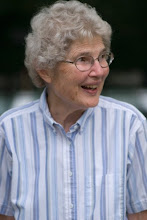On December 26th, I arrived in India for the first time in my life on my way to my cousin's wedding in our village in Punjab. Before I met up with other relatives to head to back to the old family house, though, I had one day in New Delhi on my own.
Instead of going to any major site, I decided to spend that day simply by walking out of my hotel and away from the main road to take a look at what life was like in that part of Delhi.
The first thing that struck me was the sheer abundance of social life on the progressively narrow streets. There were people everywhere talking, laughing, working, playing cards, eating, drinking juice or tea, walking, waiting, greeting each other, selling wares from doorways or from carts, driving by on bicycles and motorbikes and sometimes cars while honking regularly, looking down from balconies or rooftops--the streets were completely alive. I remember thinking: this must have been what it was like when Jesus was alive. Streets like these are where Christianity comes from.
There was also seldom a hard line of separation between the streets and the buildings. Construction guys worked from piles of gravel poured right on the side of the street and took bowels-full at a time to reinforce the lower stories of buildings that were completely open for me to see the process. Lots of finished buildings seemed open still: I looked in on a sewing factory with fifteen machines and a handful of people at work that was just open to the street; I saw into warehouses, clear to the back of shops, into the windows of houses three doors back from the alley.
It was actually difficult sometimes to keep track of what counted as a street and what was more like an internal hallway in a housing complex. The streets themselves were sort of like I imagine capilarries: getting narrower and quieter as they divide until they're just little walkways---it's a very different feel from the hard distinction in an American suburb between a street, a driveway, and a sidewalk. There were plenty of dead ends, so that it was quite difficult to keep track of where I was after the first hour or so, and plenty of construction, so that it never quite felt like your location was permanent anyway.
I was still out and about when a nearby boys' school got out and boys in red sweaters poured through the streets in happy streams for a while. A few minutes later, a girls' school got out, too, and girls in blue and white came streaming through the area from a different direction.
I remember stray dogs wandering through the traffic, pretty much minding their own business and keeping their heads low.
I remember a shoe repair man sitting down on one of the big, paved streets on the edges of the area I was exploring, holding a customer's sandal between his feet while he stitched it back up with his hands.
On one edge of the neighborhood, I saw a giant trash dump which I used as a landmark. Like everything else, it was open--big and small paths led in and out, people came looking for useful things and left when they'd found what they wanted. There was a big cow grazing there.
A few people absently watched or nodded their heads when I came by, but nobody seemed to think it was unusual to have me wandering through their neighborhood and looking around. Maybe I looked just Indian enough to seem fairly normal. Maybe enough other people wander out of the hotels and back into the streets for a while that local people are used to foreigners in their streets, though I sort of doubt that. Maybe things are just open enough that no one's used to worrying about who's looking around or expecting them to have any reason for it.
In any case, it was a beautiful day. I know New Delhi has all sorts of problems, but it was really wonderful to get a sense of the energy, openness, and sense of community in one corner of Mahipalpur, a few blocks back from the airport hotels and travel agencies on the paved road out front.
I think my ideal neighborhood would be a cleaner version of that place.
